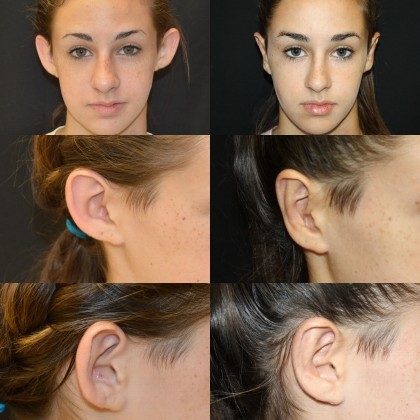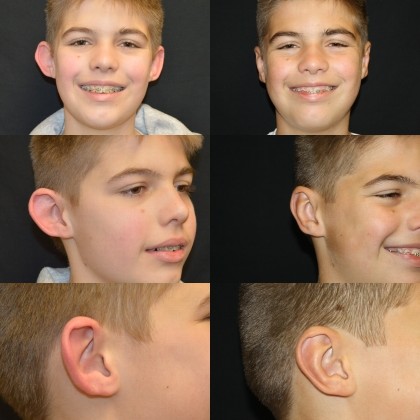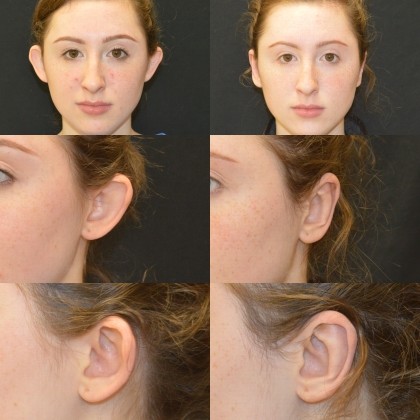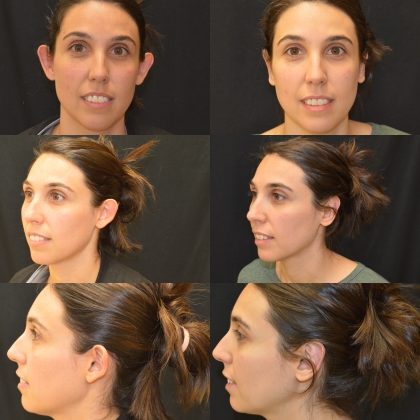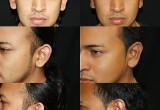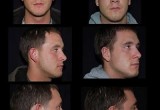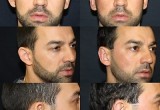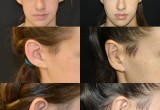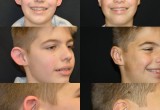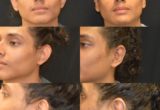Ear Reshaping
Ear reshaping, or Otoplasty, is usually performed to set prominent ears back closer to the head or to reduce the size of large ears. For the most part, the operation is done on children between the ages of four and 14. Ears are almost fully grown by age four, and the earlier the surgery, the less teasing and ridicule the child will have to endure. Ear surgery on adults is also common. If you are considering ear surgery for yourself or your child, this information will give you a basic understanding of the procedure. You will learn when it can help, how it's performed, and what results you can expect. It cannot answer all of your questions, since much depends on your individual circumstances. Please be sure to ask Dr. Baroody if there is anything you don't understand about the procedure.
ALL SURGERY CARRIES SOME UNCERTAINTY AND RISK
When ear surgery is performed by a qualified, board certified plastic surgeon like Dr. Baroody, complications are infrequent and usually minor. Nevertheless, as with any operation, there are risks associated with surgery and specific complications associated with this procedure. A small percentage of patients may develop a blood clot between the skin and the underlying cartilage. It may dissolve naturally, drawn out with a needle, or drained through a small incision. Occasionally, patients develop an infection in the cartilage which may cause scar tissue to form. Such infections are usually treated with antibiotics; rarely, surgery may be required to drain the infected area.
PLANNING FOR SURGERY
Dr. Baroody recommends that parents stay alert to their child's feelings about protruding ears. Do not insist on the surgery until your child wants the change. Children who feel uncomfortable about their ears and want the surgery are generally more cooperative during the process and happier with the outcome. In the initial meeting, Dr. Baroody will evaluate your child's condition, or yours if you are considering surgery for yourself, and recommend the most effective technique. He will also give you specific instructions on how to prepare for surgery.
WHERE THE SURGERY WILL BE PERFORMED
Ear surgery is usually performed as an outpatient procedure in Dr. Baroody's office-based surgical facility or a freestanding surgery center.
TYPES OF ANESTHESIA
If your child is young, Dr. Baroody may recommend general anesthesia, so the child will be asleep through the operation. For older children or adults, Dr. Baroody prefers to use local anesthesia.
THE SURGERY
Ear surgery usually takes about two to three hours, although complicated procedures may take longer. The technique will depend on your individual condition. Dr. Baroody makes a small incision in the back of the ear to expose the ear cartilage. He will then sculpt the cartilage and bend it back toward the head. Permanent stitches will be used to help maintain the new shape. Occasionally, Dr. Baroody will remove some ear cartilage to provide a more natural-looking fold when the surgery is complete. Another technique involves a similar incision in the back of the ear. Skin is removed and stitches are used to fold the cartilage back on itself to reshape the ear without removing cartilage. In most cases, ear surgery will leave a faint scar in the back of the ear that will fade with time. Even when only one ear appears to protrude, surgery is usually performed on both ears for a better balance.
GETTING BACK TO NORMAL
Adults and children are usually up and around within a few hours of surgery. A bulky bandage is placed immediately following surgery to promote the best molding and healing. The ears may throb or ache a little for a few days, but this can be relieved by medication. The next day, the bulky bandages will be replaced by a headband. Be sure to follow Dr. Baroody's directions for wearing this dressing, especially at night. Stitches are usually removed in about a week. Any activity in which the ear might be bent should be avoided for a month or so. Most adults can go back to work about five days after the procedure. Children can go back to school after seven days or so, if they are careful about playground and gym activities.
OTHER EAR PROBLEMS
Besides protruding ears, there are a variety of other ear problems that can be helped with surgery. These include: "lop ear," when the tip seems to fold down and forward and "cupped ear," which is usually a very small ear. Surgery can also improve large or stretched earlobes.
MORE NATURAL-LOOKING EARS
Most patients, young and old alike, are thrilled with the results of ear surgery. But keep in mind, the goal is improvement, not perfection. Do not expect both ears to match perfectly; perfect symmetry is both unlikely and unnatural in ears. If you have discussed the procedure and your expectations with Dr. Baroody before the operation, chances are, you will be quite pleased with the result.



